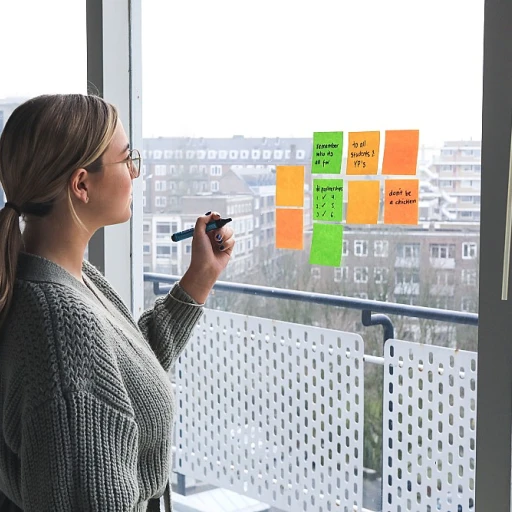Understanding the Importance of Time Management
Recognizing the Essential Nature of Time Management
Understanding the critical role of time management in a student's life is fundamental. High school can be a whirlwind of classes, extracurricular activities, and social commitments. A daily planner or a schedule can be an invaluable tool to manage all these effectively. Time spent strategically on managing tasks enhances productivity, reduces stress, and leads to a more fulfilling and balanced school life. Effective time management helps students to prioritize tasks, ensuring that high-priority activities are tackled first without compromising on extracurricular pursuits or leisure. By identifying and addressing time wasters, students can focus on activities that contribute meaningfully to their learning and development. Developing strong time management skills early on is crucial, as these skills will benefit students in both academic and professional pursuits. Whether it's allocating time for study skills sessions, group projects, or planning leisure time, an informed approach can make a significant impact on student success. For those seeking to hone their management activities and skills further, a resource on enhancing workforce skills provides valuable insights into upskilling and reskilling techniques. Students will find that incorporating structured time management practices enables them to navigate their middle high school years with greater confidence and less stress, leading to positive outcomes throughout their academic journey.Identifying Time Wasters and Prioritizing Tasks
Recognizing and Eliminating Time Wasters
In the busy life of high school students, it's easy to lose track of time. Identifying activities that consume time without adding value is crucial for effective time management. Common time wasters include excessive social media use, unplanned breaks, and inefficient study habits. Recognizing these can help students regain control of their day.
To combat these distractions, students can use tools like daily planners or digital apps to track their activities. By logging how each minute is spent, students will become more aware of their habits and can adjust accordingly. This simple management activity can significantly enhance their study skills and overall productivity.
Prioritizing Tasks for Better Time Management
Prioritizing tasks is a vital skill for managing time effectively. Students should start by listing all tasks, from school assignments to extracurricular activities, and then categorize them based on urgency and importance. This helps in focusing on high-priority tasks first, ensuring that critical deadlines are met.
One effective method is the Eisenhower Box, which divides tasks into four categories: urgent and important, important but not urgent, urgent but not important, and neither urgent nor important. By using this technique, students can focus on what truly matters and reduce stress from last-minute work.
For more insights on enhancing professional growth through self-development, check out this resource that offers valuable tips and strategies.
Developing a Personal Time Management System
Personalized Time Management Framework
Creating a personal time management system is essential for high school students seeking to balance their diverse tasks and extracurricular activities effectively. A personalized approach to managing time combines strong organizational skills with an understanding of individual preferences and needs. Here are some steps to help students develop their own system:
- Analyze Current Habits: Begin by evaluating current time-utilization habits. Identify which activities consume the most time and whether they contribute positively to your academic and personal life. Keep a diary for a week, noting all activities. This will become instrumental in identifying time wasters.
- Set Realistic Goals: Establish both short-term and long-term academic and personal goals. These will act as a roadmap for prioritizing tasks throughout the school day. Efficiently managing tasks will aid in crafting an effective time management framework.
- Choose Tools and Techniques: Adopt tools like daily planners, calendars, or digital apps such as Google Slides to track assignments, deadlines, and activities. These tools assist in visualizing a balanced schedule, allowing for dynamic adjustments when necessary.
- Create a Consistent Routine: Establishing a regular schedule for study sessions and extracurricular activities helps maintain balance. Consistency in timing fosters better concentration and enhances study skills.
- Incorporate Flexibility: While maintaining a routine is vital, flexibility should be built into your schedule to adapt to unforeseen changes or spontaneous learning opportunities. Flexibility encourages resilience and efficient task management in varied situations.
By developing a personalized time management system, students will acquire valuable skills that extend beyond academics, aiding in various facets of life and work. This rationale supports students in managing not only their current responsibilities but also prepares them for the expectations of future educational and professional environments. Personalized management activities enable high school students to optimize their study time and experience a more balanced and fulfilling school life.
Incorporating Breaks and Leisure Activities
Balancing Productive Breaks with Leisure
Finding the right balance between productive breaks and leisure activities can significantly enhance a student’s ability to manage time effectively in high school. Though it might seem counterintuitive, incorporating breaks into a student’s schedule actually boosts efficiency rather than hinders it. Concentration falters when students push themselves without pause, leading to diminishing returns in their work and study habits over the course of the day.
To optimize this aspect of time management, students should consider integrating breaks strategically into their daily planner. Instead of lengthy, unproductive interruptions, aim for short, five to ten-minute breaks between study sessions or challenging tasks. These brief respites act as effective time management techniques, helping to reset the mind and increase concentration.
Crafting a Well-Rounded Schedule
Furthermore, including leisure activities is crucial for maintaining a balanced lifestyle. Engaging in school extracurricular activities, whether a sport, a club, or an interest group, provides a positive outlet for energy and social interaction outside the academic setting. Encouraging students to explore different interests enriches their learning experience, developing skills that benefit them well beyond school life.
Leisure activities should not be viewed as time wasters. Instead, framing them as part of a larger time management strategy allows students to prioritize tasks in a way that respects both academic responsibilities and personal growth. It’s about crafting a daily schedule that harmonizes study time with necessary breaks, a lesson that will prove invaluable as they advance through high school and beyond.
Engaging in Beneficial Group Activities
Group activities also provide invaluable opportunities for collaborative time management, fostering skills that aid students in both academic and professional settings. Management activities such as group study sessions or project-based work teach students to allocate time effectively for teamwork, a crucial skill in middle and high school education.
Facilitating these shared experiences will help students understand how different parts of a team contribute to a common goal while appreciating the importance of managing their individual time effectively. By regularly reflecting on these management activities and adjusting strategies as necessary, as discussed on our blog, students develop robust management skills that serve them throughout their life.
Collaborative Time Management Activities
Implementing Group-Based Work for Effective Time Use
Engaging in group-based work not only enhances learning experiences but also builds management skills among high school students. Collaborative activities provide an ideal platform for students to harness collective strengths, streamline tasks, and prioritize more efficiently. These activities also introduce students to diverse opinions and approaches, enriching their problem-solving capabilities. Organized group work allows school students to tackle tasks in a structured manner, reducing the chances of activities time being wasted. Teachers can guide students by assigning roles based on each member's strengths. Assign certain tasks to individuals versed in those areas while others provide support. This division multiplies learning opportunities and ensures that every minute is used wisely. Encourage students to integrate extracurricular activities into their schedule, balancing academic responsibilities with creative pursuits. This holistic approach to time management nurtures well-rounded individuals ready to meet the challenges of life beyond school. Leverage online tools such as Google Slides for collaborative presentations or shared documents for group study sessions. These platforms provide a virtual space for students to collate ideas, manage tasks, and discuss strategies, which effectively hones their time management skills. Furthermore, peer feedback can be an invaluable resource, allowing students to reflect on each other's work and adapt strategies. Such interactions foster a growth mindset and an understanding of the importance of fine-tuning personal strategies based on collaborative insights.Reflecting and Adjusting Time Management Strategies
Evaluating and Modifying Time Strategies
In the fast-paced life of high school, students need to consistently evaluate and modify their time management strategies to ensure success. This will not only solidify essential management skills but also set the stage for effective lifelong time management. Here's a practical approach to refining time strategies based on reflection and adaptation.
Firstly, dedicate time at the end of each week to review how your daily planner or schedule was managed. This evaluation can be carried out individually or as a group activity among schoolmates engaged in similar activities. Ask yourself, "Which tasks took longer than expected?" and "Where did time wasters creep in?" Identifying these patterns is the first step to real change.
Based on this analysis, consider which activities were prioritized effectively and which activities need a different approach. Reassessing how you prioritize tasks can shed light on necessary adjustments. This may be particularly useful for balancing academic responsibilities with extracurricular activities.
Once you've pinpointed areas for improvement, seek out management tips and techniques that might offer new perspectives or solutions. Participating in management training or utilizing tools like Google Slides can aid in visualizing your management activities and creating a more streamlined schedule.
Don't forget the importance of implementing changes that gradually build better study skills and learning habits. With each iteration of your personal time management system, incorporate lessons learned to enhance productivity and reduce stress.
Lastly, engage in open discussions with peers and educators to gain insights into how others manage their activities time. Collaborative sharing of effective time management methods among school students can spark innovative approaches and mutual support, making the demanding landscape of high school more navigable.








